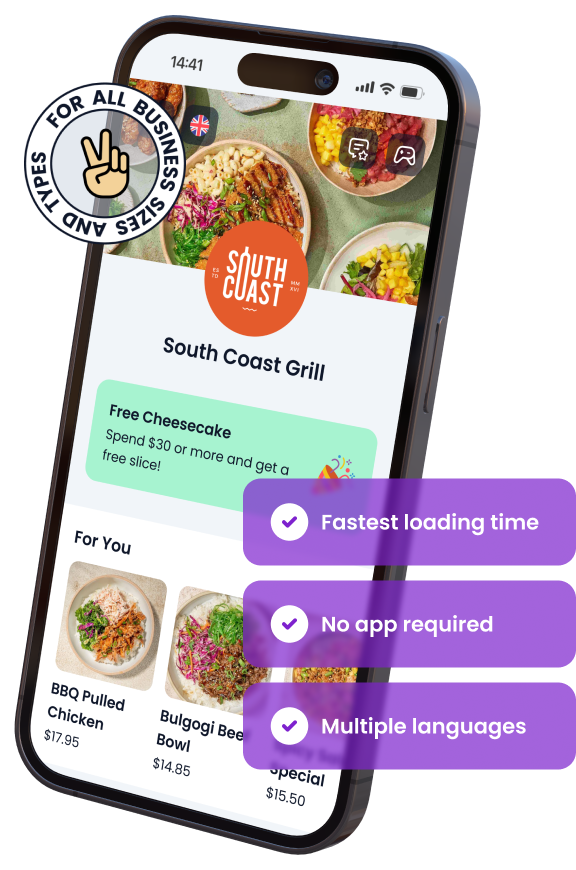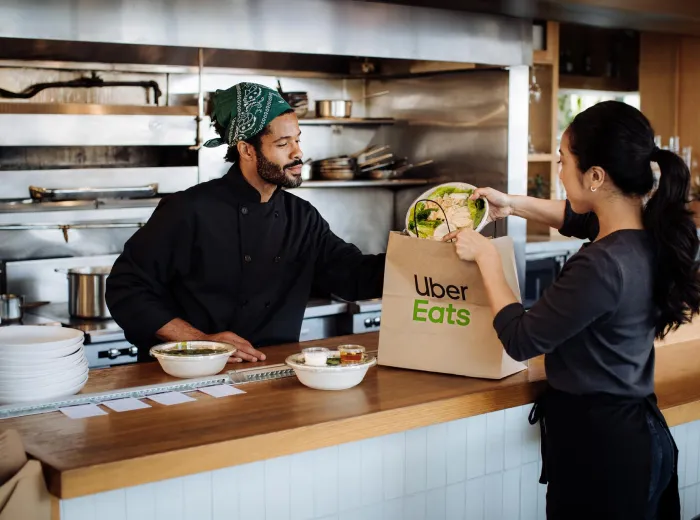

Opening a Restaurant in Dammam: 10 Mistakes Not to Make
Opening a restaurant in Dammam can be an exciting opportunity, but it’s also a significant challenge that requires careful planning and awareness of the local market. Dammam, as a growing city in Saudi Arabia’s Eastern Province, offers a promising environment for new dining ventures due to its diverse population and thriving economy. However, without the right strategy, even the best restaurant concepts can falter.
Understanding the unique demands of Dammam’s food and beverage industry is crucial for success. From navigating local regulations to meeting customer expectations, every decision plays a vital role in determining whether your restaurant will flourish or fail. Avoiding common mistakes made by new restaurateurs can be the key to a successful launch and sustained growth.
This guide highlights 10 critical mistakes that restaurant owners should avoid when opening in Dammam. By being aware of these pitfalls and implementing strategic approaches, you can set the foundation for a thriving and profitable business in this vibrant city.
Would you like to listen our deep-dive conversation about this article?
Failing to Understand Local Market Demand
One of the most common reasons restaurants fail in Dammam is the lack of understanding of local market demand. The restaurant industry here is influenced by cultural, economic, and social factors that need to be thoroughly researched before opening. Not knowing what your target customers expect can result in poor sales and a disconnect between your brand and the community you’re serving.
How to Research Dammam's Restaurant Trends
Understanding current trends in Dammam’s restaurant scene is essential to offering what customers are craving.
- Conduct competitor analysis: Visit local restaurants, especially those offering similar cuisines or services. Observe their menus, customer volume, and atmosphere to gauge what works and what doesn’t.
- Identify growing cuisines and dining experiences:
- Check if there is increasing demand for specific cuisine types (e.g., Middle Eastern, Asian, or fusion).
- Research popular dining experiences such as family-friendly environments, fast-casual dining, or luxury options.
- Use online tools and surveys: Utilize social media and platforms like Google Trends or TripAdvisor to track what types of restaurants are gaining popularity.
Ignoring Consumer Preferences in Dammam
Consumer preferences in Dammam are influenced by a unique blend of tradition and modernity, making it crucial to align your offering with local tastes.
- Cultural and dietary considerations: Saudi Arabia has a distinct culture, and Dammam residents often prefer family-oriented restaurants that accommodate large groups. Additionally, offering halal food is a necessity.
- Menu adaptation: Customize your menu to incorporate local ingredients and flavors, ensuring that it resonates with the local palate while staying true to your restaurant’s theme.
- Consider the growing demand for health-conscious options: There is an increasing shift toward healthier eating, with customers seeking organic, vegan, and low-calorie options.
Understanding the local market and customer preferences will help you shape your restaurant concept, ensuring that it meets the needs of your target audience in Dammam. By doing the groundwork, you can align your business with both current trends and long-term demands.
Overlooking Legal and Licensing Requirements
Navigating the legal landscape is a critical step when opening a restaurant in Dammam. Without the proper permits and licenses, your business can face fines, delays, or even closure. It’s essential to be familiar with the regulatory requirements in Saudi Arabia and ensure your restaurant complies with all local laws.
Common Permits Needed to Operate in Dammam
Securing the necessary permits is a legal obligation that protects your business from penalties and interruptions.
- Restaurant Business License: Every restaurant must obtain a business license from the local municipality. This ensures your business operates legally and is approved by the relevant authorities.
- Health and Food Safety Permits: Compliance with Saudi Arabia’s strict food safety standards is essential. You will need:
- A food safety certification from the Saudi Food and Drug Authority (SFDA).
- Regular inspections to ensure hygiene standards in food handling and preparation.
- Zoning and Construction Permits: If you plan on constructing or renovating a building for your restaurant, you must secure zoning permits and comply with building regulations.
- Commercial Registration (CR): Every business in Saudi Arabia needs a Commercial Registration certificate from the Ministry of Commerce. This document is required to operate legally and engage in financial activities like opening a bank account.
How to Ensure Compliance with Local Authorities
To avoid any legal hiccups, staying compliant with Dammam’s regulations is crucial for smooth operations.
- Work with a legal advisor: Given the complexity of Saudi laws, hiring a legal expert familiar with the food and beverage sector can help you navigate the process. They can ensure all paperwork is in order and prevent delays.
- Understand local labor laws: Saudi Arabia has specific regulations regarding hiring staff, especially expatriates. Ensure you comply with Saudization (Nitaqat) requirements, which mandate hiring a certain percentage of Saudi nationals.
- Keep up with inspections: Regularly schedule health and safety inspections to ensure you meet ongoing food hygiene and sanitation standards. Failure to comply can lead to fines or even the closure of your restaurant.
Taking care of these legal and licensing requirements early on can help you avoid costly mistakes down the line. Compliance not only protects your business but also builds trust with your customers and local authorities.
Choosing the Wrong Location for Your Restaurant
The location of your restaurant can make or break your business. A poor choice can lead to low foot traffic, high rent, and operational challenges. When selecting a location in Dammam, it’s crucial to consider factors such as visibility, proximity to your target market, and the overall competitiveness of the area.
What Makes a Great Location in Dammam?
Choosing the right location in Dammam is about aligning your restaurant with the needs and habits of your target customers.
- Proximity to commercial and residential areas: Ensure your restaurant is near busy commercial centers, office buildings, or residential neighborhoods where people naturally gather.
- Accessibility and visibility: Your location should be easy to find and access. Consider major roads, public transportation routes, and parking availability. Restaurants located in highly visible areas are more likely to attract spontaneous visitors.
- Surrounding competition: While being near competitors may seem risky, it can actually drive foot traffic to your area. Research areas with thriving restaurant scenes, but be sure to differentiate your concept from nearby establishments.
Mistakes to Avoid When Selecting Your Location
Some common mistakes in choosing a restaurant location can lead to financial struggles or operational inefficiencies.
- Ignoring target demographics: Before finalizing your location, ensure the local population aligns with your target market. For instance, if you’re opening a fine dining restaurant, look for an affluent neighborhood with higher spending power.
- Overlooking rent costs: High-rent areas can drain your budget if the volume of business doesn’t match the cost. Ensure that rent, as a percentage of your monthly revenue, is sustainable—ideally no more than 10%.
- Failing to consider lease terms: Be mindful of the lease agreement’s flexibility. Some leases may have unfavorable terms such as long lock-in periods or restrictions on renovations, which can hinder your ability to adapt your space to your restaurant’s needs.
Choosing the right location in Dammam requires a careful balance of visibility, affordability, and accessibility. By avoiding these common mistakes and considering the needs of your target audience, you’ll be better positioned to choose a location that sets your restaurant up for success.
Underestimating Startup Costs
Many restaurant owners underestimate the initial investment required to open and sustain their business, leading to financial stress soon after launch. Opening a restaurant in Dammam requires not only capital for setup but also reserves to cover operational costs until the business gains momentum. Proper financial planning is essential to avoid falling into debt or running out of funds.
Breaking Down the Initial Investment
Understanding the full scope of your startup costs is key to building a sustainable business model.
- Lease and renovation costs: Depending on your restaurant’s location and size, rent can be a significant upfront expense. Renovating or customizing the space to suit your concept adds further costs.
- Lease deposits (usually 6-12 months upfront)
- Renovation and interior design costs (kitchen setup, dining area aesthetics, furniture, lighting)
- Licenses and permits: Securing the necessary permits comes with fees that vary depending on the size and type of restaurant.
- Commercial registration, business licenses, and health permits
- Renewal fees for ongoing licenses
- Equipment and inventory: The cost of kitchen equipment, furniture, and technology (POS systems, ordering apps) can quickly add up.
- Appliances (ovens, refrigerators, freezers, etc.)
- Dining furniture (tables, chairs, décor)
- Initial stock of food, beverages, and packaging materials
How to Create an Effective Budget
Creating a realistic budget is crucial to managing your finances, ensuring you have enough capital for both setup and ongoing operations.
- Calculate operational costs: Ensure you plan for day-to-day expenses such as staff salaries, utilities, and supply restocking.
- Staff wages (including Saudization requirements)
- Utility costs (electricity, water, gas)
- Food and beverage inventory (projected based on anticipated demand)
- Plan for a buffer: It’s wise to have at least 6 months of working capital reserved for unexpected costs and to cover slow periods as your restaurant builds its customer base.
- Marketing campaigns for your launch and ongoing promotion
- Repairs and maintenance (kitchen equipment, facility upkeep)
- Explore funding options: If your personal savings are not enough, consider alternatives such as business loans, partnerships, or investor backing.
- Local banks or Saudi investment programs can provide startup funding.
- Crowdfunding platforms or private investors may also be viable options.
By accurately forecasting your startup and operational costs, you can avoid financial pitfalls that could jeopardize your restaurant’s success in its early stages. Proper budgeting ensures you have the resources to thrive even before profits start rolling in.
Neglecting to Build a Strong Brand
A restaurant’s brand is more than just a logo or a catchy name—it’s the identity that sets it apart from the competition and resonates with customers. In Dammam’s growing food scene, where diners have plenty of options, a strong, cohesive brand is essential for standing out and creating a lasting impression. Failing to invest in your brand can lead to confusion, lack of customer loyalty, and missed opportunities for growth.
Why Branding Matters for Success in Dammam
Your brand is the story you tell customers, and it influences how they perceive and remember your restaurant.
- Crafting a unique concept: In a competitive market like Dammam, a distinctive concept is crucial. Whether it’s a niche cuisine, a unique dining experience, or a standout theme, your brand should communicate what makes you different from other restaurants in the area.
- Examples: A modern fusion café, a family-style dining experience, or a fine-dining Middle Eastern restaurant with a contemporary twist.
- Developing a visual identity: Your restaurant’s visual elements—logo, colors, fonts, and overall design—should align with your concept. These elements will be featured on your menu, signage, website, and social media platforms, so consistency is key.
- Logo and name design: Choose elements that reflect the restaurant’s personality.
- Décor and ambiance: The interior design should mirror the brand message, whether it’s casual, upscale, or trendy.
- Positioning in the market: Effective branding involves positioning your restaurant where it belongs in the minds of consumers. Whether you’re aiming to be an upscale dining destination or a cozy local spot, your brand should clearly communicate that.
Building Consistency Across All Touchpoints
Brand consistency helps create a seamless experience for customers, making it easier for them to recognize and trust your restaurant.
- Menu design and presentation: Your menu is a reflection of your brand and should be designed with care. The menu should align with the restaurant’s theme and be easy to navigate.
- Ensure the menu design, descriptions, and pricing are consistent with the overall brand (e.g., upscale design for a fine-dining establishment, casual and fun for a family café).
- Customer service experience: Train your staff to uphold the values of your brand in their service. The way customers are treated plays a large part in how they perceive your restaurant.
- Friendly, personalized service for casual diners
- Professional, attentive service for fine dining
- Digital branding: In today’s digital age, your online presence is as important as your physical space. Your website, social media pages, and online reviews all contribute to your brand image.
- Website: Ensure your website is visually aligned with your restaurant’s physical experience and is user-friendly.
- Social media: Consistent posting, interaction with customers, and clear messaging help build your brand presence online.
By focusing on building a strong, cohesive brand from the start, you will position your restaurant for success in Dammam’s competitive market. A memorable and well-developed brand fosters customer loyalty, encourages word-of-mouth promotion, and enhances your ability to grow your business in the long term.
Failing to Invest in Marketing and Promotion
Opening a restaurant in Dammam without a solid marketing strategy is a recipe for low visibility and missed revenue opportunities. In today’s competitive food industry, even the best restaurants can struggle if they don’t actively promote themselves. A well-thought-out marketing and promotion plan can help build your brand, attract new customers, and retain loyal ones.
Digital Marketing Strategies for Restaurants in Dammam
Digital marketing is essential for reaching your target audience and driving traffic to your restaurant, both online and in-person.
- Leverage social media platforms: Social media is one of the most powerful tools for engaging with customers in Dammam.
- Instagram: Share high-quality photos of your dishes, behind-the-scenes content, and special promotions to attract local food lovers.
- Facebook: Use Facebook events to promote special occasions like grand openings, live music nights, or themed dining experiences.
- TikTok: Create engaging videos that showcase your restaurant’s vibe, unique dishes, or fun interactions with staff and customers.
- SEO for your restaurant’s website: A well-optimized website is crucial for local search visibility.
- Use location-based keywords like “best restaurant in Dammam” or “Dammam family dining” to rank higher in search engine results.
- Ensure your site is mobile-friendly, loads quickly, and includes clear information like your menu, hours of operation, and contact details.
- Google My Business: Claim and optimize your Google My Business profile to ensure your restaurant appears in local searches and Google Maps.
- Encourage satisfied customers to leave positive reviews to boost your ranking.
Traditional Marketing Methods Still Work
While digital marketing is critical, traditional methods still hold value, especially in a community-driven city like Dammam.
- Local print advertising: Place ads in community newspapers or magazines that target your local demographic.
- Focus on publications that are popular with families or professionals if these groups are part of your target audience.
- Radio and TV advertising: Consider radio spots or local TV ads to reach a broader audience. These mediums can be effective for promoting special events, holidays, or new menu launches.
- Flyers and posters: Distribute flyers or place posters in strategic locations like shopping centers, residential complexes, and community centers. These can include special promotions or discounts for first-time visitors.
Forming Partnerships with Local Influencers
Working with influencers can significantly boost your restaurant’s visibility and credibility, especially if they have a strong following in Dammam.
- Collaborate with food bloggers and social media influencers: Invite local influencers to dine at your restaurant and share their experience with their followers.
- Host an exclusive event or tasting session to create buzz.
- Offer special deals for influencers’ followers: Create unique promotions that influencers can offer to their audience, such as a discount code or a complimentary drink with a meal.
- This not only drives new traffic but also enhances customer engagement.
By investing in both digital and traditional marketing, and leveraging partnerships with local influencers, you can create a comprehensive promotional strategy that ensures your restaurant stands out in Dammam’s competitive market. Effective marketing not only attracts new customers but also builds brand loyalty, driving repeat business and sustained growth.
Mismanaging Restaurant Operations
Running a successful restaurant goes far beyond creating a great menu or choosing the right location. Effective management of daily operations is essential to keep your restaurant running smoothly and profitably. Mismanaging operations, whether it’s poor staff coordination, inefficient workflows, or failing to implement necessary technology, can quickly lead to high costs, wasted resources, and frustrated customers.
Key Elements of Efficient Restaurant Management
Efficient management is about optimizing every aspect of your restaurant’s operations to ensure both staff and customers have a seamless experience.
- Streamlining kitchen and staff workflows: A well-organized kitchen and front-of-house team can reduce waiting times and enhance the overall dining experience.
- Create clear roles and responsibilities for each staff member to prevent confusion and overlap.
- Implement a structured kitchen layout to ensure that chefs and staff can easily access ingredients and tools.
- Set standard operating procedures (SOPs) for food prep, service, and cleanup to maintain consistency.
- Inventory and supply chain management: Poor inventory control can lead to food waste or shortages, which affects both profitability and customer satisfaction.
- Use inventory management software to track stock levels and automatically reorder when supplies are low.
- Build strong relationships with local suppliers to ensure timely delivery of fresh ingredients.
- Implementing technology for seamless operations: Using modern technology can make managing a restaurant much easier and more efficient.
- Install a point-of-sale (POS) system to track sales, manage orders, and handle customer payments more effectively.
- Use reservation and table management software to streamline bookings and reduce wait times for customers.
The Importance of Employee Training
Properly trained employees are the backbone of any successful restaurant, and investing in their development pays off in better service and higher morale.
- Training programs for new hires: Create an onboarding process that introduces new employees to your restaurant’s values, expectations, and operational procedures.
- Focus on customer service skills to ensure a welcoming and positive experience for diners.
- Cross-train staff in different roles to provide flexibility during busy times and cover for absent employees.
- Ongoing skill development: Encourage continuous learning to keep your team motivated and up-to-date on industry trends.
- Offer workshops on food safety, customer interaction, and leadership skills for senior staff members.
- Regularly review employee performance and provide feedback to help them improve their skills.
Mismanaging restaurant operations can result in inefficiencies that lead to increased costs and dissatisfied customers. By focusing on streamlined workflows, investing in technology, and providing comprehensive employee training, you can create a well-oiled operation that supports long-term success.
Setting Prices Without Considering the Market
Pricing your menu correctly is one of the most critical decisions you’ll make as a restaurant owner. Set your prices too high, and you might scare off potential customers. Set them too low, and you risk eating into your profits. In Dammam, where the dining market is growing and evolving, understanding how to price your offerings in relation to the local market is crucial for maintaining profitability and competitiveness.
How to Price Your Menu for Profitability
Pricing should reflect not only your costs but also what your target market is willing to pay, ensuring both customer satisfaction and healthy margins.
- Understand your cost structure: Before setting prices, calculate your food costs, overhead, and labor expenses.
- Factor in ingredient costs, portion sizes, and preparation time to determine a baseline price.
- Include fixed costs such as rent, utilities, and staff wages in your overall pricing model.
- Use a profit margin strategy: Aim for a food cost percentage of around 30-35% to leave room for profit.
- Example: If a dish costs 20 SAR to produce, its selling price should ideally be around 57 SAR to maintain a healthy margin.
- Evaluate customer expectations: Gauge how much your target market is willing to pay by assessing local competition and consumer purchasing power.
- Research competitors offering similar cuisine and quality to see what they charge for comparable menu items.
- Adjust your pricing to reflect the dining experience—whether it’s casual, mid-range, or fine dining.
Avoiding Price Wars with Competitors
Trying to compete solely on price can be a dangerous strategy that eats into your profit margins. Instead, focus on delivering value.
- Offer value beyond just price: Competing with established restaurants in Dammam by underpricing can lead to financial strain. Instead, focus on providing additional value that justifies a premium.
- Examples include offering higher-quality ingredients, a unique dining experience, or exceptional customer service.
- Implement creative pricing strategies: Use special promotions, bundles, or loyalty programs to attract customers without permanently reducing your prices.
- Offer limited-time discounts or set meal deals to draw in customers during slower periods without devaluing your core menu items.
- Introduce loyalty rewards for repeat customers, such as a free meal after a certain number of visits or discounts on their favorite dishes.
Pricing your menu strategically allows you to balance profitability and customer appeal in Dammam’s competitive restaurant scene. By understanding your costs, considering market conditions, and focusing on value rather than price alone, you can set prices that ensure both customer satisfaction and a sustainable profit margin for your business.
Ignoring Customer Feedback and Online Reviews
In today’s digital age, customer feedback and online reviews play a crucial role in shaping a restaurant’s reputation. Ignoring these valuable insights can hurt your business in Dammam, where customers often rely on online platforms to make dining decisions. Listening to feedback, responding to reviews, and making necessary adjustments can lead to improved customer satisfaction, increased loyalty, and a stronger brand presence.
How to Collect and Act on Customer Feedback
Gathering direct feedback from your customers allows you to identify areas of improvement and enhance the overall dining experience.
- Encourage feedback through multiple channels: Provide customers with easy ways to share their thoughts, whether in person or online.
- Use comment cards at tables or after meal transactions for in-the-moment feedback.
- Implement online surveys or email follow-ups to encourage guests to share their experiences.
- Actively listen to customer concerns: Not all feedback will be positive, but even negative feedback can be an opportunity to improve.
- Identify recurring themes in customer feedback, such as slow service or dissatisfaction with a menu item, and address these issues quickly.
- Inform your team about common complaints and ensure they are trained to handle them more effectively.
- Reward feedback participation: Encourage more customers to provide feedback by offering incentives, such as a discount on their next visit or a chance to win a free meal.
The Role of Online Reviews in Dammam’s Restaurant Scene
Online reviews are a powerful tool for potential customers, and ignoring them can negatively impact your business. Engaging with online reviews, both positive and negative, demonstrates that you value your customers’ opinions and are dedicated to improving.
- Monitor reviews on popular platforms: Regularly check online review sites such as Google, TripAdvisor, and Zomato to see what customers are saying about your restaurant.
- Claim your business profiles on these platforms to manage and respond to reviews effectively.
- Pay attention to both positive and critical reviews to get a balanced view of customer perceptions.
- Respond to reviews professionally: Whether the review is good or bad, responding promptly and respectfully is key to maintaining a positive reputation.
- For positive reviews, thank the customer and show appreciation for their business.
- For negative reviews, acknowledge the issue, apologize if necessary, and offer a solution or invite the customer back to improve their experience.
- Use reviews to improve your business: Reviews are a valuable resource for gaining insights into what your restaurant is doing well and where it can improve.
- Make adjustments based on customer feedback, whether it’s altering menu items, enhancing service, or adjusting pricing.
- Highlight improvements in future marketing campaigns to show customers that you take feedback seriously.
Ignoring customer feedback and online reviews can lead to missed opportunities for growth and improvement. By actively engaging with your customers and addressing their concerns, you build trust, foster loyalty, and enhance your restaurant’s reputation in Dammam’s competitive dining market.
Overcomplicating the Menu
A well-designed menu is crucial to the success of any restaurant, yet many restaurateurs make the mistake of overcomplicating it. Offering too many options can overwhelm customers, slow down kitchen operations, and lead to increased food waste. Simplifying your menu can improve efficiency, enhance customer experience, and boost your profitability. In Dammam’s dynamic food scene, a streamlined and focused menu often leads to better results.
Why Simplicity Wins in Menu Design
A simple, focused menu can benefit both your customers and your restaurant’s operations.
- Faster decision-making for customers: When faced with too many options, customers can feel overwhelmed, leading to slower orders and decision fatigue. A smaller menu helps diners quickly find something they’ll enjoy without being bogged down by too many choices.
- Limit your menu to the top-performing dishes that reflect your restaurant’s core concept.
- Categorize dishes logically, making it easy for customers to navigate (e.g., appetizers, mains, desserts).
- Improved kitchen efficiency: A complicated menu requires more ingredients, more preparation time, and higher chances of errors in the kitchen.
- Simplifying your menu allows your kitchen to focus on mastering fewer dishes, ensuring quality and consistency.
- Reducing the number of ingredients and dishes can also streamline the purchasing process and cut down on waste.
Common Menu Mistakes That Lead to Failure
Overcomplicating the menu can create problems that impact your restaurant’s profitability and customer satisfaction.
- Too many options: A large menu can lead to inefficiencies in both service and kitchen operations.
- Dishes that are ordered infrequently take up valuable kitchen space and increase ingredient costs.
- Excessive variety can dilute your brand identity, making it harder for customers to understand your specialty.
- Ignoring customer preferences: While diversity in a menu is important, it’s crucial to offer dishes that align with local tastes and preferences.
- Conduct customer surveys or analyze sales data to identify the most popular dishes, then adjust the menu accordingly.
- Consider offering seasonal specials instead of permanently adding new items to the menu, which helps keep the menu fresh without overwhelming customers.
- Lack of alignment with kitchen capabilities: Offering a menu that exceeds the skillset of your kitchen staff can lead to inconsistent quality and longer wait times.
- Design your menu around the strengths of your kitchen team and the equipment available.
- Regularly review your menu to ensure that each dish can be executed efficiently and at a high standard.
A well-structured, simplified menu not only enhances the customer experience but also improves your restaurant’s operational efficiency and profitability. In Dammam, where the dining landscape is competitive, focusing on a few standout dishes and executing them well can be the key to long-term success.
Opening a restaurant in Dammam presents exciting opportunities, but it also comes with its share of challenges. By understanding and avoiding these ten common mistakes—ranging from market research to menu design and effective branding—you can position your restaurant for long-term success.
Each of these pitfalls, whether it’s underestimating startup costs, mismanaging operations, or neglecting customer feedback, can have a significant impact on your restaurant’s profitability and reputation. However, with the right planning and strategic approach, these challenges can be turned into opportunities for growth and improvement.
By thoroughly understanding the local market, complying with legal requirements, and creating a streamlined, customer-focused experience, you will not only attract diners but also cultivate a loyal customer base. Remember, success in Dammam’s dynamic dining scene is about creating a restaurant that not only meets but exceeds customer expectations while running efficiently behind the scenes. Avoid these mistakes, and you’ll be well on your way to building a thriving restaurant business in this competitive city.
ABOUT THE AUTHOR
Erkin Coban
Your Customers Deserve The Best
And we got Menuviel for them.
The fastest and easy-to-use online QR menu with 12+ unique features. Choose Menuviel and elevate your service quality to the next level.
Use free for the first 30 days.

In This Article

Free AI Tools for Restaurants
TRY NOW ➜

Enjoy discounted prices for Saudi Arabia
We adjust our subscription price for Saudi Arabia, so you enjoy all the same great features at a lower, more affordable rate.







